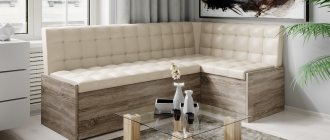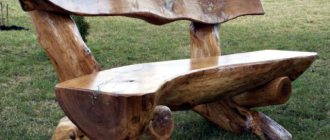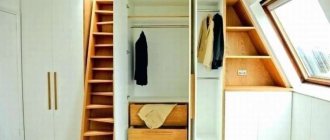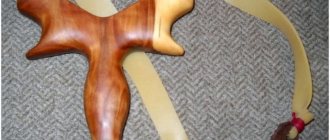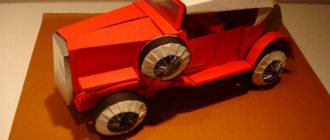grill table
Here you will learn about what is needed to make a barbecue area comfortable. The article contains several options on how to make a grill table with your own hands . Each is functional and attractive, but has its own style. A grill table will help you better organize the process; it is very convenient when everything is at hand, especially if you cook outdoors. Now you can focus on the most important part - food.
From the article you will learn how to make a table with a built-in grill, auxiliary mobile trolley tables, a removable table top for the veranda, as well as how to make useful accessories for a barbecue and other necessary things. I hope this information inspires you to create your own project.
Design Features
In simple terms, a barbecue oven is the most primitive brickwork. They make it in the shape of the letter “P”. Such a simple structure will be an excellent option for outdoor cooking.
Skilled builders install mounts for skewers on the stoves; this greatly simplifies the work when frying meat; you don’t need to hold anything with your hands, just turn it over.
Lay the boards on the frame
To assemble the table frame, drill two holes at the ends of the long sides of the frame and add countersinks for the screws that will later be inserted into them. Cut out the slats for the frame and place them end-to-end on the tabletop. Align the frame with the center of the tabletop so that there is a 20mm overlap on each of the four sides. Then lightly trace the outline of the frame on the planks using a pencil - this will make it easier to see where the holes need to be drilled. Place the tabletop boards with a gap of approximately 2 mm between them.
Make this beautiful bridge for your dacha. It's quite simple!
Covering table parts
Visible areas of the table with a built-in barbecue must be brought to near perfection or hidden from view. Special pads are made from plywood for the legs of the structure and the fryer area in which food will be directly cooked. To cut the plywood into pieces of the required sizes, we will need a jigsaw. They are pulled together in finished form using wood glue. The joints are additionally reinforced with self-tapping screws.
Thanks to a metal or concrete tabletop, you can make such a barbecue table mobile and move it within the site. However, in addition to beautiful finishing and cladding, we must not forget about fire safety measures. This is especially true if the barbecue table is planned to be located in the gazebo. It is necessary to ensure the overall stability of the structure, as well as the fact that people sitting at the barbecue table should not feel discomfort from metal heated very close by.
DIY metal grill
To build the product you will need certain skills. You must be able to work with welding equipment, an angle grinder, and a drill. In addition, you will need a drawing, measuring instruments, metal corners, fittings, and sheet iron. Scrap metal can often be lying around as useless trash in a private yard, in which case it will be easier to create a barbecue with your own hands, and the costs of this venture will also be reduced.
Advantages and disadvantages of metal barbecues
The brazier is found everywhere. Some have purchased models, others prefer homemade ones. Products are fully welded, twisted with bolts. But they all have certain features, their own advantages and disadvantages. Let's look at them in more detail and consider the main advantages of metal structures:
- Price. If we talk about products made by hand, even if you buy all the metal components, the price of such an item will be significantly lower than the factory price. If we evaluate the material, then the cost of iron and steel is several times less than copper and stainless steel.
- Simplicity of design. The main models are represented by a box located on legs. After installing it, all that remains is to fill it up and light the wood or coals, and put in the skewers with meat.
- Safety. Due to the temperature obtained when burning raw materials, the metal does not melt or burn. It also retains heat, which helps the meat cook evenly.
- Mobility and functionality. Among the wide variety of models, there are compact collapsible ones that can be used anywhere: in the yard, outdoors, on the beach, on the terrace. Some products have additional elements, in the form of stands for firewood, hooks for skewers.
Disadvantages include the metal's susceptibility to oxidation. Some models, made of thin sheet steel, can quickly rust. Also, handmade products do not always have an attractive appearance.
Design and principle of operation
In general terms, what a barbecue is is clear from its definition. If we look in more detail, the standard models have a rectangular box made of steel. It consists of four side walls and a bottom - the basis of the entire fryer. The bottom wall is made thicker, which increases the durability of the item in question. Holes are drilled in the side partitions closer to the base. Such actions lead to improved air circulation; heat is not concentrated at one point, but is distributed evenly in the box.
The rectangular structure has legs. Usually there are four. These elements are made from reinforcement rods of different diameters, metal angles, forged products, round and profile pipes. The strength and type of material is selected taking into account the load applied and the preferences of the owner. Some legs may be pointed at the bottom, others have a flat base, it all depends on where they are installed.
The fryer has a simple operating principle. Charcoal and firewood are placed at the bottom of an iron box and set on fire. After the raw materials burn out and coals appear, they are evenly distributed along the bottom. Next, lay out skewers with pieces of meat strung on them, turning them periodically until the food is ready.
Types of structures
The model range is constantly growing, new inventions appear. They can be simple or have a complex structure. But all metal barbecues can be classified into certain types:
- Disposable. They can be built from any available means. There are factory options made of steel half a millimeter thick.
- Stationary. Large product. Installed in specially equipped places. It may have a roof or be located under a canopy. Often contains additional devices: chimney, smokehouse, various stands.
- Collapsible. They differ in the method of fastening the elements (latches, bolts). They have several design options. The simplest ones are two U-shaped metal stands. They are placed between the fire and skewers are placed on top. The most common type is that all elements are connected using grooves. Consists of five leaves and legs. The original form of collapsible barbecues is presented in the form of a suitcase in which not only all the components of the product are stored, but also skewers.
- Foldable. They are distinguished by an x-shaped appearance. The principle of operation when folding is similar to that used for camping stools.
We decide on the model, material and size
Any work begins with an idea, which develops into a project. It displays all the smallest details. A good drawing is half the work done. The diagram must contain the elements of the planned structure. Having presented and chosen the most suitable model, we proceed to implement it on paper. If you have the skills, you can make a drawing yourself, use special programs, download it on the Internet, or find it in specialized literature.
At the next stage, you need to select the material for work that is most suitable for the selected fryer model. Depending on the available funds and the wishes of the owner, a stainless, steel, or forged structure can be made.
When choosing the dimensions of the product, you should be guided by the standard parameters given above. Take into account your height in order to correctly plan the height for comfortable work with the future object. If a miniature model is created, then all parameters will have to be reduced and convenience sacrificed.
6
Required tools and materials
Before starting work, they inspect the tools, and if there are shortages, they buy more. To carry out the activity you will need:
- Measuring tools, special marker, chalk;
- Grinder, drill;
- Set of metal discs, drills;
- Angle grinder;
- Manual sheet bending machine;
- Welding machine for creating a stationary structure.
In addition to tools, you will also need to prepare the materials from which we build the brazier:
- Metal sheet, pieces of steel (can be welded) with a thickness of 2 mm for portable barbecues, from 5 mm for stationary ones. Minimum values are given. If it is necessary to increase the service life of the structure, thicker raw materials are used. If the roasting pan does not consist of a single sheet, it is advisable to make its base (bottom) reinforced.
- Metal corners, fittings, round, profile pipes used for legs. Corners can be used to strengthen the joint of partitions.
- Forged elements, the base of old washing machines, grilles, and other components that can be used to highlight and decorate the product.
Manufacturing process using welding
Having the drawing in hand, having prepared the tools and materials necessary for the work, we move on to the process of building a barbecue with our own hands. We assemble the structure using the standard method, let’s look at it step by step:
- We take a sheet of metal, and, based on the drawing, use chalk or marker to mark the bottom and side partitions of the planned item.
- Using a grinder, we cut off the unused parts of the metal along the contour, leaving only the necessary ones. The result will be an expanded view of the product.
- Using a sheet bender, or cutting off the bends with a grinder, we roll the sheet of metal into a rectangular box.
- Now we pick up a welding machine (preferably an inverter) and weld the joints of the walls, if necessary, welding the bends cut with a grinder.
- If the metal is thin, we strengthen the structure by welding metal corners at the corners.
- We drill holes on the side walls for air circulation, and also cut out recesses for skewers according to the markings.
- At the final stage, all that remains is to weld the legs. They can be welded directly to the base or to the side walls. It is convenient to use both corners and pipes of different shapes. Interesting options are obtained using a wheel. If you attach a wheel to the leg, the product can be easily moved.
The considered method is the simplest. There are also options when there is a lot of welding (the structure is welded from separate pieces), and the formation of a brazier on a frame from corners.
Manufacturing process without welding
The considered version of welded structures cannot be taken with you on hunting, nature, or fishing trips. For these purposes, a collapsible version of the fryer is required. Factory models are made mainly of thin metal, so a do-it-yourself grill is much more practical. The step-by-step creation of such a product is as follows:
- If you do not have the skills to create such structures, it is better to initially make a cardboard model, assemble it, then transfer the contours of the parts onto a sheet of metal, attaching ready-made cardboard patterns to it.
- We use a grinder to cut out all the components; it is best to use diamond discs. In the process of work, difficult places come across: tenons, grooves, cuts. They can be carefully finished with a metal file.
- Next, we drill air ducts on the partitions.
- Depending on the type of connecting elements (tenon and groove, bolted), we drill holes for bolts in the structural parts or cut out and saw out the required fastening outlines.
- We can immediately cut the legs into the side walls, with which they will be one piece; we use a corner with a connection type similar to the entire structure.
Making a barbecue from a metal barrel
One of the simplest options for creating a roaster. At the same time, it turns out to be light, retains heat well, and is quite cheap. You can make an iron structure in several ways. For example, cut a barrel lengthwise, make ventilation holes and cutouts for skewers in it, and place it on legs. A more complex option is to use a solid barrel, when one part of it is a hinged lid or door. It turns out to be a closed grill. Let's take a closer look at the manufacturing technology:
- Cut the barrel. There are two ways: divide in half; From each edge, retreat a couple of centimeters and cut out a quarter of the side surface.
- We clean the edges and smooth out the dents.
- We attach the door handle to the cut out part that serves as the lid. We connect the parts of the barrel using door hinges.
- We make a chimney. To do this, we drill a hole in the barrel from its end side; it must match the diameter of the pipe used. Next, we select a pipe, the length of which is determined by the volume of the container (a hundred-liter container is enough for half a meter), its mode is in two parts (in the ratio of 1/3 and 2/3) at an angle of 45 degrees. Next, we connect the resulting elements at right angles and carefully weld the joint.
- We make a fastening for installing the grill grate.
- We install the structure on the legs.
The nuances of making a barbecue from a gas cylinder
The technology for creating a brazier is similar to that used when constructing a product from a barrel. The difference lies in the preparation of the container for use. So, to get a structure from a cylinder, you need to perform the following steps:
- We choose a gas cylinder; its volume should not be less than fifty liters. We begin preparing it. It consists of several stages: we release all the gas or its residues; unscrew the valve; pump water through the hose until it completely fills the entire volume.
- Next, we proceed by analogy with a barrel. We cut out part of the body, fasten the component elements with hinges, and install a handle on the door.
- We weld the barbecue rods and make cuts for the skewers.
- We drill holes for ventilation and a hole for the chimney.
- If necessary, we weld the handles and install the grill on the legs.
Tips for caring and using a metal barbecue
Assembling the structure is not enough. The next step is to clean the fryer of dirt and rust. To do this, you can use special liquids, and also walk over the surface with a grinder or sandpaper. If you want to give the product an attractive look, it is painted with heat-resistant paints that can withstand temperatures of 800 degrees.
During the operation of the product, after the preparation of the kebab is completed, the carbon deposits on the inside of the walls are not cleaned. In the future, it will give the kebabs a special smell.
When using a barbecue in the yard, outdoors, you need to clear the space underneath it. Remove dried grass, remove branches, needles and leaves. You should also have a container with sand and water. To remove smoke that interferes with your relaxation, a hood is installed on the product.
Making a table frame
It is necessary to think through to the smallest detail the design of a smokeless barbecue built into the table, so that you don’t have to worry about burning your feet with the heat from the stove. It is also necessary to provide for fire safety measures. Let's start by making a general frame of the structure, which will also serve as a table, and not just a brazier.
So, first of all, we definitely need the following tools with materials and consumables:
- welding machine;
- Bulgarian;
- drill with a set of drills;
- screwdriver;
- jigsaw;
- Sander;
- roulette;
- self-tapping screws, nuts, bolts in assortment;
- metal corner or profile with a square section;
- a supply of plywood or deck boards;
- fiber cement slabs;
- cotton wool for thermal insulation;
- magnetic corners;
- wood glue;
- paint and varnish for woodworking;
- epoxy resin;
- sealant;
- rubber plugs;
- protective mask and gloves.
Preparing to assemble all parts
As soon as we have prepared the tabletop, arranged the brazier and made other auxiliary elements of the barbecue table, we can begin the final assembly of the structure. We need to make its fasteners, for which holes are drilled on the front side. The bolt heads must be wide enough.
The legs of the structure are rounded by a milling machine and prepared for further final grinding. After this, they are closed with rubber plugs. The tabletop is now assembled and ready for final finishing and thermal insulation.
DIY brick grill
The classic iron grill is good in its own way. However, owners of private houses and summer cottages give preference to a more convenient structure. The brick oven fits well into the overall design of the site. It can be built in accordance with the style of the house.
Setting up a stationary recreation area is significantly more expensive. A massive structure can become an accent composition and attract the attention of guests. Brick also retains heat well. The stove can be functional: used as a grill, barbecue; consist of a fireplace; have a cauldron on the stove. Often, not only meat is cooked on a stone grill. For example, pilaf is stewed in a cauldron, sausages and other food are heated on a barbecue.
Even an inexperienced mason can build simple structures with his own hands. To do this, you will need to prepare a project, a drawing. Next, you should review the availability of materials and tools, and purchase them if necessary. Make a foundation, build a structure.
Features and types of designs
The simplest type of brick barbecue is a temporary structure with a primitive structure. The product does not require a foundation; the bricks are not bonded with mortar. They are lightweight. The combustion compartment is located under a grate or skewers, the main thing is that the sheet metal is heat-resistant. Such a structure has an unsightly decorative appearance and is not protected from precipitation.
More interesting are the options for massive structures that have a complex configuration. They can be rectangular, round, corner, or in various elegant formats. Products can have a canopy, be located under a roof, a canopy, or stand in an open space. Despite the differences in design, they all have a similar structure, which is expressed in the following elements:
- Foundation base;
- Base, represented by several rows of bricks installed on the base;
- A roasting pan protected from the wind by the upper side walls;
- Chimney. This is the main distinguishing feature of brick structures; the exhaust effect depends on its design; the higher it is, the greater the draft.
There are even large complexes of structures that have a universal purpose. These may include: oven; cauldron; kitchen sink, stainless steel countertop; additional hob; cupboard for storing dishes; one or two compartments for storing firewood. Sometimes they equip a smokehouse.
Design and calculation of the quantity of materials for construction
The barbecue must correspond to the general appearance of the site on which it will be built. In addition, when drawing up a project, it is necessary to ensure free access to the facility, take into account the type of structure, the safety of the structure, and comfort during operation. You should also provide a place for placing sand, a shovel, and running water. Determine the material for the base: concrete screed, paving slabs, stone. Consider having a roof. Choose an open or closed fryer option. Decide whether additional extensions are needed in the form of a washbasin, countertop, or stove for a cauldron.
It is prohibited to install a stove on the border with a neighboring plot. Smoke can enter the house through the windows, which will lead to unpleasant consequences and conflict situations.
After drawing up a diagram of the future structure, you should calculate the amount of materials that will be spent on the construction of a homemade barbecue. The volume of sand, crushed stone, concrete mortar, brick is calculated using the following formula: v=a*b*c, where v is the amount of required material (volume), a, b, c are length, width, height, respectively.
Preparing the foundation or base for the barbecue
A compacted area is not suitable for the foundation of a durable capital building. The issue should be approached thoroughly. A stationary stove requires a solid foundation. Preparing a stable base begins with removing the top of the soil. To do this, it is necessary to remove up to thirty centimeters of soil. Next, agrofibre is laid, a small layer of sand (up to 5 cm) is poured on top, and crushed stone (5-6 cm) is poured. A reinforcing frame is installed. The next step will be pouring the concrete solution and leveling the surface using the rule. A building profile is used as beacons.
The preparation of a concrete mixture is as follows: cement is mixed with sand in a ratio of one to three. Next, water is poured into the mixture and crushed stone is added. To increase the fluidity of the concrete mixture, liquid soap is added. After pouring, the concrete is allowed to dry, periodically wetting the top surface with water to prevent cracks from forming.
Brick laying and decorative finishing
Having finished with the base, you can proceed directly to the construction of the furnace. The brick must be heat-resistant. To prevent it from drawing moisture from the concrete, it should be moistened the day before installation. Work begins with the creation of a base. The first layer of masonry is made continuous, completely covering the concrete base. The bricks on each subsequent line should not coincide with the seam of the previous one, otherwise the structure will lose stability. Let's look at the step-by-step execution of actions:
- After determining the thickness of the layer (half, single, one and a half), the walls are erected. Laying starts from the corner.
- The evenness of the constructed surface is periodically checked by using a plumb line.
- The mortar protruding from the seams is removed, after which the seams are cleaned and deepened, giving them a characteristic appearance.
- We reinforce every third row with reinforcing mesh.
- After the woodshed is laid out, a reinforced concrete floor is installed above it, or two layers of brick are laid out. The construction of the structure continues.
- The metal elements that make up the support for the pallet on which wood raw materials will be burned are installed on opposite walls parallel to each other. In addition, the brazier can be fixed directly to the bricks by making a special protrusion inside the structure. A barbecue net is also attached.
- At the final stage, the chimney is erected.
The resulting fireplace can be decorated with special plaster, lined with tiles, porcelain stoneware, or covered with savage stone, plaster.
Interesting ideas for creating brick grills, ovens and barbecues
There are many different designs and interesting types of brick kilns. A solid high barbecue can be covered with a canopy, which will protect it from precipitation and extend the life of the structure. Let's look at some interesting ideas:
- A two-tier oven with an electric spit will look good;
- A round brick grill, made in the shape of a table with legs, which combines a barbecue, a pizza oven;
- A gazebo with a corner barbecue in the shape of a Russian stove, which has a table top, a gas hob, and a washstand. There is a bar counter nearby;
- Round design with vertical loading of skewers;
- Barbecue on the terrace, lined with wood-like porcelain stoneware.
